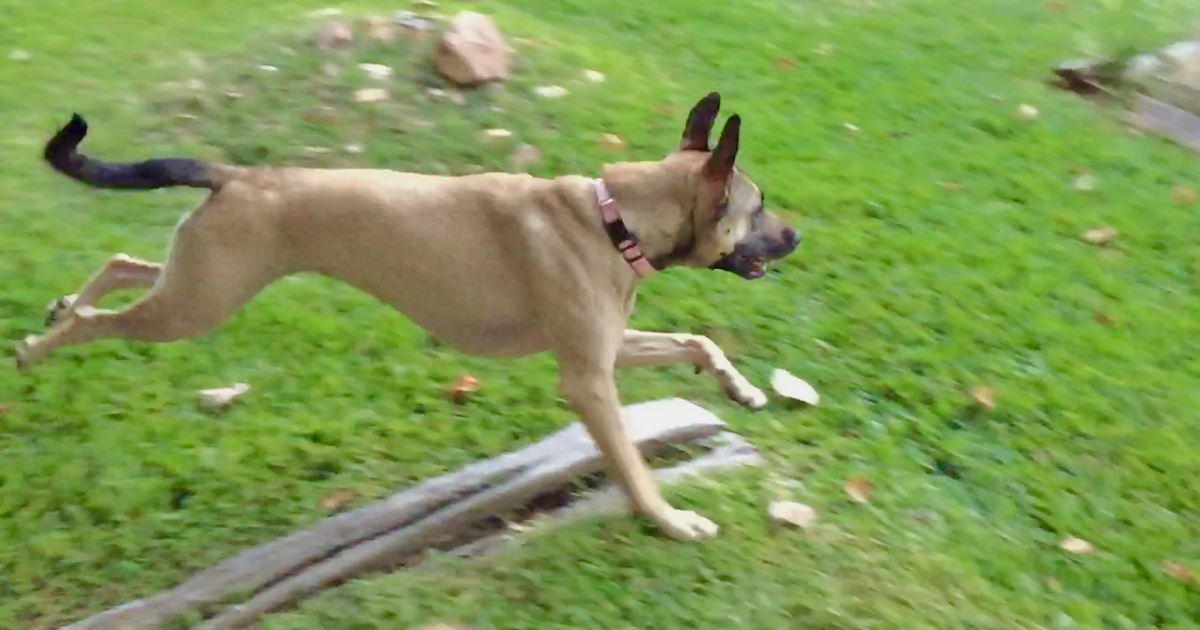
The Best Thing I Ever Taught My Dog
Bold claim, eh? But almost 10 years later, I think I am safe making it. Clara learned other things, like how to be around people other myself, that were more important. But those things were either trained directly by or supervised by my phenomenal trainer. This one I thought up and executed myself, and it has paid off ever since.
I classically conditioned Summer’s barking to predict puppy Clara’s favorite treat, which was spray cheese. That stuff is still very high on the list, so high I learned to make a substitute when I could no longer get it.
I did this conditioning because I was worried that Clara would pick up my dog Summer’s reactive habits. Summer was anxious and startled easily. She was fearful of most men, people coming on the porch (e.g., deliveries), and most of all, delivery trucks. She hated those trucks. I had never been able to classically condition her to them because I was not home all day. So she had plenty of exposures that were not paired with great things. I did make some inroads later but could never mitigate it completely.
Feral Clara was very much at risk for picking up fears and fearful habits since she already had a bucketload of them. But they didn’t include delivery trucks. She was remarkably calm about vehicles and machinery. And being a puppy, she hadn’t learned yet to join into bark-fests automatically, as so many adolescent and adult dogs do.
I figured I had a chance to get a foot in the door.
The classical response grew operant components of reorientation to me, followed by a recall. Pretty cool to have a dog come running to you when another dog barks, rather than joining into the mayhem!
How It Started
Here is Clara at less than one year old. The conditioned response was already strong.
How It Is Now: Nine Years Later
I have maintained the classical pairing. This is a response of Clara’s I highly value for her mental health. Of course, I don’t always have ultra-high-value stuff on my person. Over the years, I have tended to scale the value of the treat. When Zani was alive, Clara got some kibble when she barked. Ditto with my friend’s Chihuahua mix, who barks a lot. Neither of those was particularly alarming to Clara, but they fit in the barking category, so she got a little something for those.
But any other dog barking means great stuff for Clara. When she and I are outdoors these days, I am ready with it. We have dogs next door in both directions and two more who are often visible from the yard. In the winter, I generally have a tube of my faux spray cheese mix out on the porch. It’s safe from going bad for a few days when the weather is cold. Now, in the heat, I have a plastic container of soft cat food treats.
Clara does fine with the dogs on one side, a sweet border collie mix and a Dane mix. She doesn’t like it when they get noisy, but still generally ignores them. But on the other side, we have new dogs. Two goldendoodles, plus more doodles and retriever types that come with visiting family members quite often. And though they are dog-friendly, the doodles in particular tend to stand erect and stare, which bothers Clara no end.

However, her conditioned response still holds. I’ve taken lots of videos of her “barking recall” over the years, but the following video is one of my favorites. It happened last fall. Clara and I were in the backyard doing our version of nose work. She was searching for a toilet paper tube with some treats in it. She knew the neighbor dogs were out there at the fence and had seen them staring but was still happy to search. And I had hidden the tube in the part of the yard away from the dogs.
Check out the video for Clara’s operant and classical responses when a dog barks at her.
The Ethics

Dogs bark for all sorts of reasons; I’m not going to try to list them. But converting the sound of a dog bark to predict food rather than to function as a prompt for a social interaction, whether affiliative or aggressive, was not an easy thing. I was pushing back against some very strong, natural dog behaviors. Was this OK for me to do?
Classical conditioning is a paradox. On one hand, when you are doing it well, it is so non-intrusive that the dog doesn’t even “know” training is happening, not in the way they seem to know about operant-leaning training sessions. And although operant behaviors will be there immediately in classical conditioning, the dog never has to “work” for the food when we are following a classical protocol. They can’t get it wrong. Once they experience the trigger, the food is going to appear, whatever they do.
On the other hand, in this case, I was interfering with a basic and natural dog response. Barking certainly seems to be a social behavior, one that triggers predictable types of responses from other dogs. One could call it intrusive on my part to step in.
But you know what? I am fine with this decision. When we take a dog into our lives, the training we do is not just for us. The training benefits the dog in helping them thrive in this weird human world and develop behaviors that pay off for them and don’t drive us nuts or endanger anybody. This training was beneficial to her. I wasn’t even thinking about my own convenience when I trained it. I wanted to protect her from catching a particular fear.

Clara is easily aroused. Since we worked so hard and exclusively on getting her OK with humans in her early years, some reactivity to dogs has crept in. Without the early bark-conditioning, she would likely have a lot more unpleasant experiences in her life. And her life would be much more limited. Just today, I took her for a walk around the neighborhood. (By the way, this is a Big Deal that Clara can do this.) Whenever we go out, without fail, we get barked at by dogs behind fences and dogs looking out windows and glass doors. A few of them pound on the windows with their paws as they bark. Clara either looks to me for a treat, or ignores them as she chooses another reinforcing activity, such as exploring sniffing. The classical pairing gave us a head start against likely leash reactivity. And indeed, the potential for reactive behavior is not completely erased. Back home, when the neighbor dogs catch us unawares, Clara will indeed run to the fence for the beginning of a fearsome “let’s bark in each other’s faces” session. But she interrupts herself almost immediately, or if she doesn’t, I do. So yes, there are big seeds for reactive behavior there. But the classical pairing, the reinforcement of operant behaviors, and the maintenance have prevented them from growing into a big extended aggressive response.
Yes, I have interfered with her natural dog reaction. I interfered, just as we do when we house train dogs, train them not to chew indiscriminately, and take steps to mitigate the natural behavior of resource guarding. And in this case, I did it entirely for her.
Other Types of Classical Conditioning for Puppies
Marge Rogers and I are currently discussing our new book, Puppy Socialization: What It Is and How to Do It on the Facebook group Books, Barks, and Banter. (Come join us! We are there until the end of June.) A discussion we had in the group made me think of juxtaposing these “then” and “now” videos of Clara. It’s also made me realize that one of the things I love about the topic of puppy socialization is that so much of it is based on classical conditioning: building positive, happy associations with new stuff. It’s a gift you can give to a puppy, or a grown dog if you are playing catch-up. Sometimes you don’t have to keep up the pairing religiously. Once a puppy (especially in their sensitive period for socialization) recovers from having a mild fear response to something in the environment, other reinforcers can come into play. I watched that happen with Clara with many things. But for a dog with fearful tendencies who didn’t get the best start in life, it really pays off if you do keep up the 1:1 pairing. I think I made the right decision with the dog barks.
Related Posts
Copyright 2021 Eileen Anderson
creditSource link






